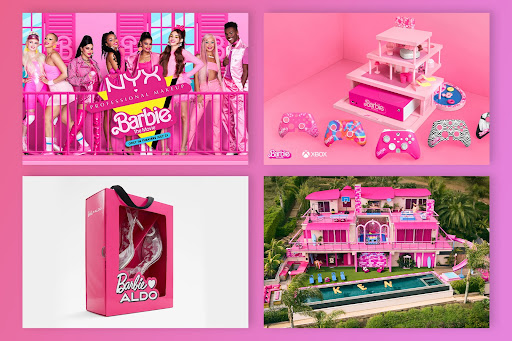At Twenty One Twelve we design marketing strategies capable of taking your ideal target market from having no knowledge of your brand into being warm sales qualified leads. When we first encounter a new brand, we go through a series of simple steps to create the most efficient strategy possible. The below questions form part of this process, they help to cut out the noise and simplify the complex, empowering you to reach your goals without unnecessarily wasting time and money.
1. Start With The End In Mind
Forget vanity metrics and intangible tactics. Start by asking:
“What does my marketing need to deliver for me to achieve my aims?”
If you need 10 clients a month to hit your targets and your conversion rate is 1 in 5, you need 50 quality leads a month to hit your goals.
It sounds simple and in most cases it is. You’ve just created a marketing goal which you can base your whole strategy around.
2. “Only We”
The hard part is working out the most efficient way to acquire those 50 leads.
An often overlooked place to start is redefining what makes you different.
Finish the sentence:
“Only we can deliver this service in under 24 hours within this region”
You may not have a global unique selling point, but you don’t need to.
Examine what makes you different from your immediate competitors.
Stuck?
Ask your customers why they use you.
3. Identify your ‘A’ Clients
When I ask for client’s target markets, I often find they’re far too generic.
They only need to acquire 100 or so customers each year and yet they give us 6 or 7 different target markets, none of which are well defined.
Unless you’re stacking them high and selling ’em cheap. you need to get very specific here.
You need to get granular about who it is you love working with:
❓ Who are your best clients?
❓ Why are they your best clients?
❓ How did you acquire them as clients?
❓ What position does the decision maker hold?
❓ Why do they buy from you?
It goes back to your USP.
Don’t be afraid to pick up the phone to your ‘A’ clients and ask them why they use you.
Trust me, they will tell you.
You’re going to leverage that information to find more clients like them.
4. Structure A Budget
How much would you pay to acquire a new client?
Start by looking at the average lifetime value of your customers i.e. the amount they are worth to your business over the course of your entire relationship.
Now work backwards to figure out your budget…
Let’s say your ‘A’ clients spend £12,000 a year with you.
And based on your margins, you’re happy to spend £1000 acquiring them.
You convert 1 in 5 leads.
So now you know you need to be generating quality leads at £200 each.
You also know you need 5 customers a month.
So you need 25 leads each month and you’re happy to spend £5000 to acquire them.
£5000 is your max budget.
You now know you need to find tactics which will deliver 25 leads at £5000 per month or less.
Over time, as your marketing becomes more efficient you can monitor and attempt to push down your client acquisition costs.
5. Review Past Results/Competitor Analysis
What’s worked for your business so far?
Delve into the data and examine where your clients have come from.
Perhaps the majority of your leads come through your website.
But how good are those leads?
What is the lifetime value of the conversions from your website?
In this section, we want to know where your best clients come from and create a strategy which doubles down in those areas.
If your best clients come from referrals consider the following:
- How well do you educate your network on referring you?
- How well do you incentivise referrals?
- Who refers to you the most?
- Can you create more relationships like that?
- If so, how?
Now analyse your competitors, where are they active?
6. Quick Wins
There are always quick wins. Here are a couple of examples to get you started:
9 x ROI for an Ed-Tech Startup
“We want to scale faster” was the brief we were given.
The first thing we did was explore how they communicated with the tens of thousands of people in their database.
Turns out they didn’t…
By sending a fortnightly newsletter, packed full of valuable information, we generated 50 leads per week on average.
Not too bad for a very simple, low cost marketing tactic.
Other good examples include rejigging the user journey on your website to convert more traffic or remarketing to a warm audience using online advertising. You can discover more in our guide How to Win Bigger Clients.
7. Sustainable Wins
Sustainable wins are the forms of lead generation which keep on giving. Here’s another real life example:
A mortgage broker we work with gets the majority of their referrals from an estate agency. This is the perfect example of a strategic partnership.
They reward the estate agent with 30% of any closed business they generate for them.
Rather than spending big going after the consumer, we focused our client’s lead generation on acquiring more strategic partners.
The strategy has paid off, every estate agent we sign passes them multiple leads each week.
Good sustainable tactics include:
1. Setting up strategic partnerships
2. Cross-marketing with brands who share your target market
8. Now scale it
The above tactics are great but they are difficult to scale.
At some point, you need a predictable way to acquire new clients.
Here’s where it’s important to really do your research.
You have a lot of options from PPC and telemarketing to cold email and SEO – I would recommend talking to an expert before embarking on any single strategy.
These wins are the hardest to come by, they have the lowest conversion rate and they are the most expensive form of lead generation.
But they make your business super scalable.
And guess what?
These clients eventually become quick wins as they start referring you and you upsell them through your brilliant communications strategy.
Want to know more? Email us on info@2112.marketing to set up a call. Our team is based across Henley-on-Thames, Marlow and London, if you prefer a face to face meeting!




